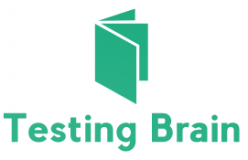After you have identified various activities of the project and defined the sequence in which these activities should be carried out along with the due relationships existing among the activities, the next step is to draw a network diagram that is a graphical representation of the sequence you have identified for the activities. When you … Continue reading Drawing an Activity Network Diagram for a Project – an Overview
Sequencing Activities of a Project
After you have identified and defined activities, the next logical step is to identify the sequence in which these activities should be carried out. Therefore, the Project Management Book of Knowledge (PMBOK) published by the Project Management Institute (PMI) has defined the next process as the Sequence Activities process. In this process you define how … Continue reading Sequencing Activities of a Project
Defining Activities of a Project
The Define Activities process is used to further work on the work packages of the work breakdown structure. You use this process to break down a work package further to the activity level. An activity of a project is a small enough unit that you can estimate, schedule, monitor, and manage efficiently and effectively. Often, … Continue reading Defining Activities of a Project
An Introduction to the Schedule Management Plan
Schedule management plan is yet another important and integral part of the overall project planning. In the Project Management Body of Knowledge (PMBOK) guide published by the Project Management Institute (PMI), the plan for schedule management in not identified as an individual entity of the scheduling process. However, it is considered as a part of … Continue reading An Introduction to the Schedule Management Plan
What is Time Management – an Overview
It is an old saying that time is money. This holds true for any business organization too. Therefore, it becomes more and more important for business organizations to manage time in their day to day activities. As a project manager, you cannot afford to manage a project that runs till eternity. You can neither afford … Continue reading What is Time Management – an Overview
Creating a Mind Map for the Project Requirements
A mind map is a powerful tool that you can use to represent the requirements of a project. It is a graphical tool that you use for the visual representation of the project requirements. Additionally, a mind map is a hierarchical representation of ideas, and depicts the relationship among all components of the project. When … Continue reading Creating a Mind Map for the Project Requirements
Controlling the Project Scope
The Control Scope process is yet another important process defined in the Project Management Body of Knowledge (PMBOK) guide published by the Project Management Institute (PMI). This process enables you to measure the performance of the project and product scope. Additionally, the process enables you to manage the scope baseline changes. The baseline of the … Continue reading Controlling the Project Scope
Verifying the Project Scope
According to the Project Management Body of Knowledge (PMBOK) guide published by the Project Management Institute (PMI), Verify Scope is an important process. As the process name indicates, verify scope does not mean that you make sure that you have correct scope of the project during the planning phase. However, you use this process to … Continue reading Verifying the Project Scope
Defining a Work Breakdown Structure (WBS) Dictionary
When you manage an enterprise level project, one of the deliverables of the project planning phase is the work breakdown structure. The ultimate level of the work breakdown structure is a work package. In an enterprise level project, the work breakdown structure is quite large and has a large number of work packages. It is … Continue reading Defining a Work Breakdown Structure (WBS) Dictionary
Creating a Work Breakdown Structure (WBS) for a Project
Work breakdown structure of a project is a created by decomposing its stages hierarchically and incrementally into various phases, deliverables, and work packages. It is an inverted tree structure that has branches representing subdivisions of all the efforts required to accomplish an objective that is represented by the root of the inverted tree. Advantages of … Continue reading Creating a Work Breakdown Structure (WBS) for a Project
